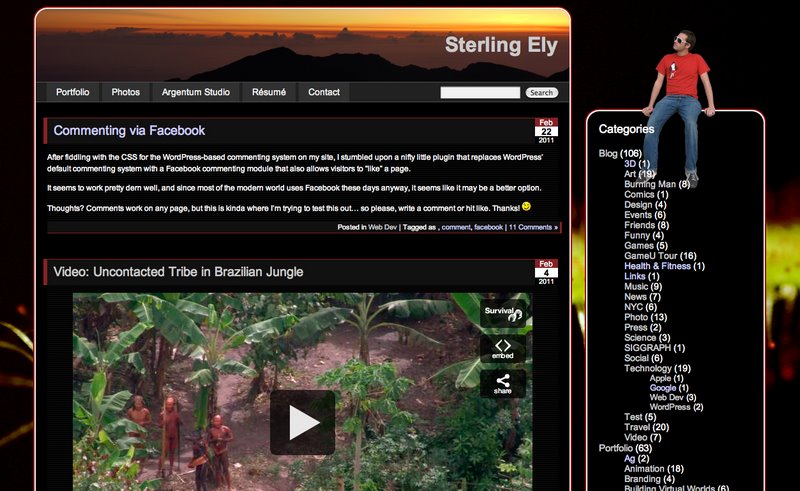 Shortly after Apple announced that it would be releasing an iPhone SDK in October of 2007, I mused that the iPhone would be a major gaming platform by Christmas of 2008. The SDK finally appeared in March of 2008, and by December, even Apple was touting the iPod as a competitor to the Nintendo DS.
Shortly after Apple announced that it would be releasing an iPhone SDK in October of 2007, I mused that the iPhone would be a major gaming platform by Christmas of 2008. The SDK finally appeared in March of 2008, and by December, even Apple was touting the iPod as a competitor to the Nintendo DS.
A large percentage of the of the 27,000 apps currently available to the 30 million iPhones & iPod Touches that Apple has sold are games, and Apple in on track to break the billion download mark soon. iPhone/iPod Touch games recently swept the IGF Mobile Game Awards, and features in the new SDK, such as the addition of peripheral support, in-app purchases, peer to peer connections, push notification, and media library integration will allow games, as well as other apps, to become even richer and more complex. The iPhone/iPod is certainly a relevant, if not “major” gaming platform, and will only continue to be more so.
But what about Apple TV?
Apple has long called Apple TV a hobby, giving it little fanfare, and letting it seep into the living rooms of early adopters who simply wanted to stream media to their HDTVs. However, if Apple were to create an SDK for the Apple TV, it would open the doors for developers to create a myriad of useful apps as well as games, all of which could interface with with users’ iPhones and iPod Touches. The video hardware, which can easily handle high def movies with surround sound, is lacking for Xbox-level graphics, however simpler games are certainly possible. Board games such as Scrabble are an obvious example, as the TV can be the “board” and each player can view their pieces and interact with the game using their iPhones, however, the real potential lies in utilizing the multitouch, motion sensor, camera, and other abilities available in the iPhone. I would not be surprised if within a year Apple introduced a combined (or complementary) SDK for both iPhone and Apple TV. The next iPhone is already rumored to have a significantly more powerful graphics chip, and a similar upgrade to the next Apple TV could make them quite a pair, for gaming or otherwise.
iTunes was just the beginning
Apple has already built the framework for a full digital ecosystem to stream and control a variety of media across a plethora of devices, and they have created an SDK & App Store that has, within a year, birthed a major software platform. All they need to do now is connect the dots and provide an SDK for an upgraded Apple TV. The result: programs on computers, iPhones, iPods, and Apple TVs will network together not only to stream photos, music & video as before, but to do anything else a developer can dream up, whether it be using an iPhone to control a Keynote presentation on an Apple TV, or for multiplayer 3D games that surpass the combined features of the Wii & Xbox 360.
 A few weeks back, my sister and brother in law had a Caddyshack-themed party, and our good friends Schocholautte (pronounced choc-O-lot) were kind enough to trek out to Long Island and play for us.
A few weeks back, my sister and brother in law had a Caddyshack-themed party, and our good friends Schocholautte (pronounced choc-O-lot) were kind enough to trek out to Long Island and play for us.




